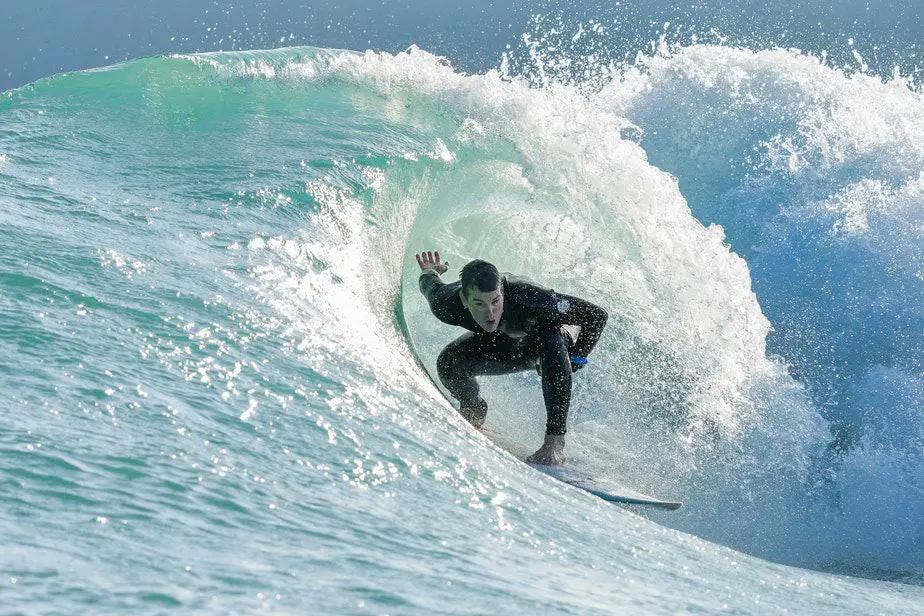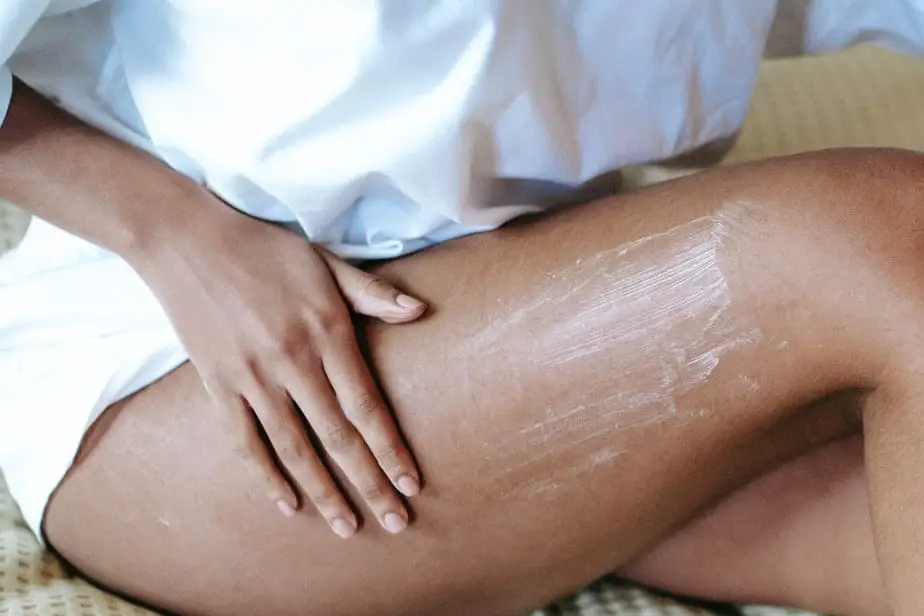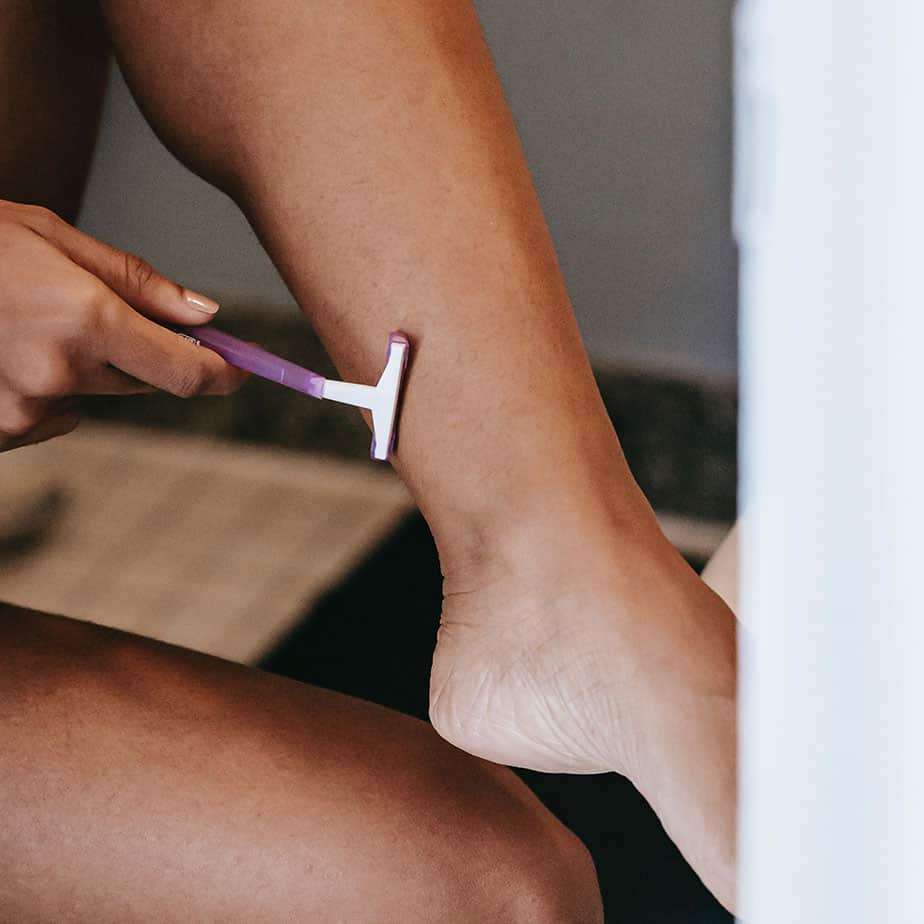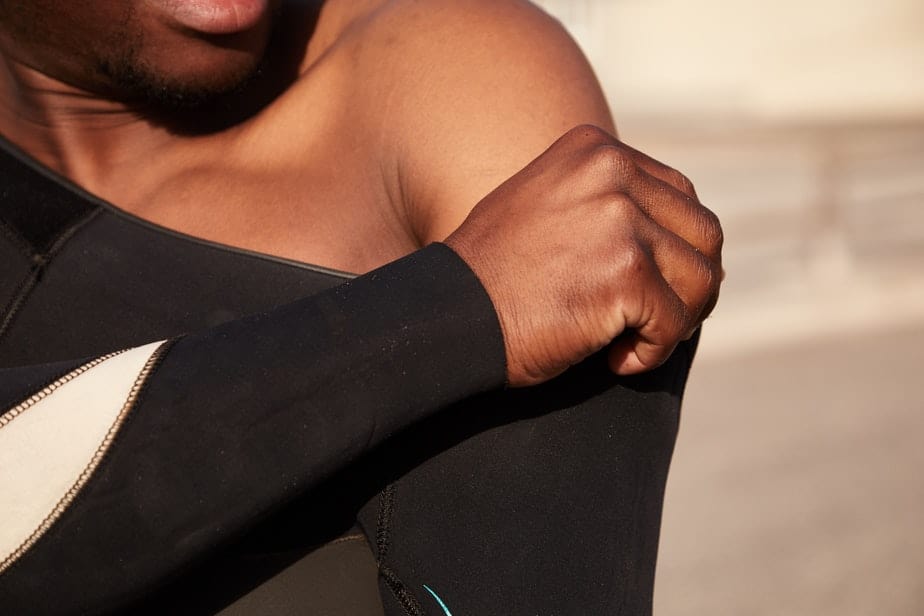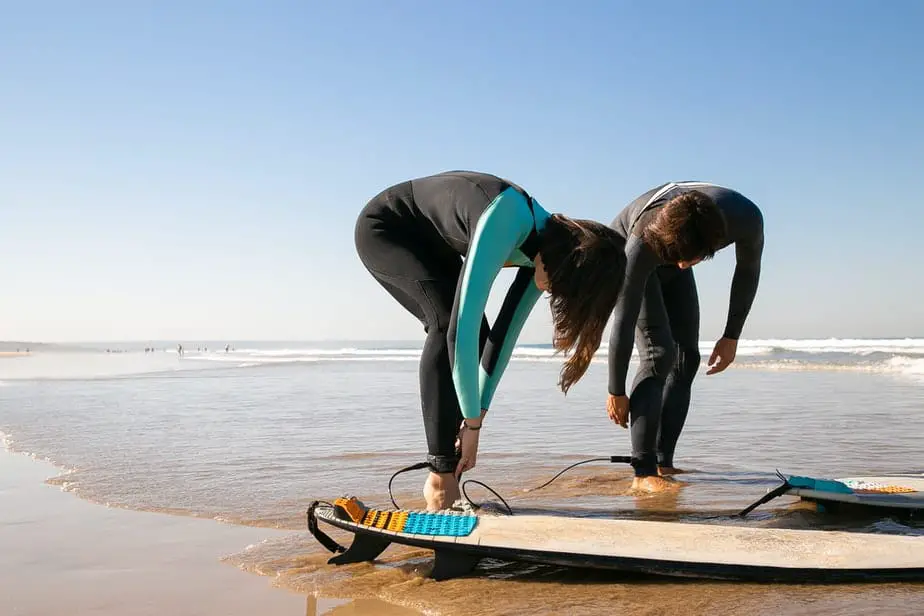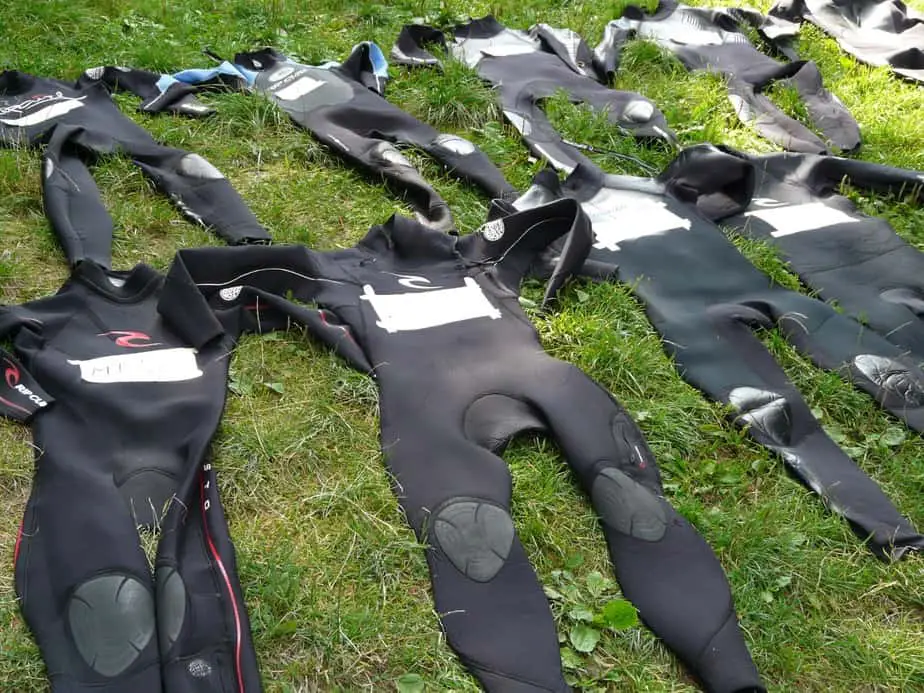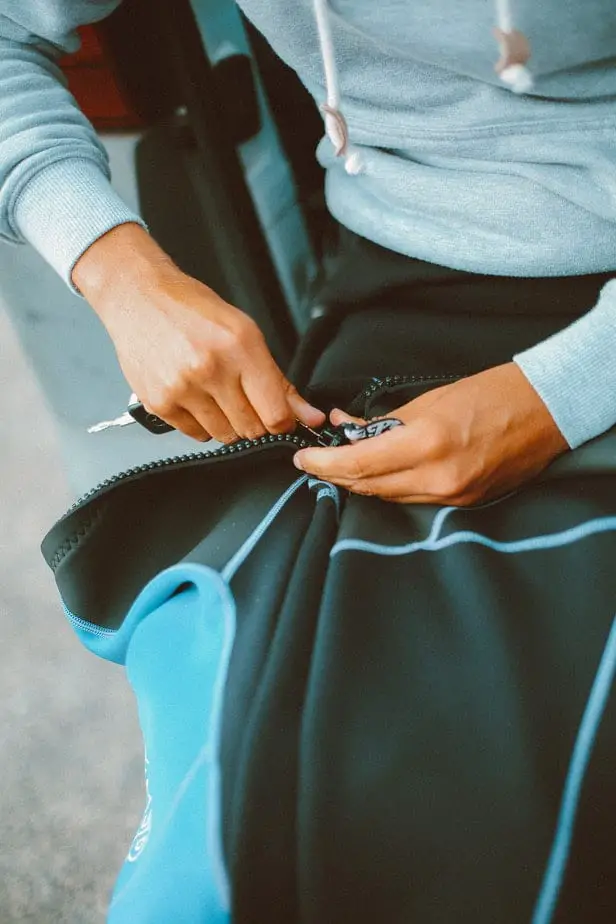Perhaps you’ve noticed that most surfers are wearing a wetsuit – whether in pictures, videos, or just by visiting your local beach, and you might be wondering: why? Is there an inviolable rule that all surfers must wear wetsuits? Is it a great sin to surf without a wetsuit? Will there be sirens blaring and surfing police coming to arrest you for violating a sacred law you didn’t know about?
No, you don’t have to wear a wetsuit to go surfing. A wetsuit’s primary function is to keep the wearer warm. But, if the weather and water temperature is hot enough, then you don’t have to wear a wetsuit. Wetsuits provide many benefits, but they also have some downsides like: a high cost, restricted mobility, chance of getting a wetsuit rash, and possibly making you overheat.
In this article, we will go over when you might not want to wear a wetsuit while surfing, and the possible advantages you can get when you forgo a wetsuit.
When can you surf without a wetsuit?
Even though there are many good reasons to wear a wetsuit even in tropical waters, there are certainly times that you can surf without a wetsuit.
First, let’s go over what exactly these wetsuit benefits we keep talking about are. Wetsuits provide the following advantages: warmth, UV protection, protection against reef, rocks, and smaller wildlife, reduced chances of getting board rash (but you might get wetsuit rash instead), and much longer surfing time due to the aforementioned advantages.
We also want to expand on the point about warmth. Being able to retain your body heat means that you are not limited to surfing only in the summer or at tropical locations. You have more freedom to surf elsewhere or during colder months because you can stay warm. Your surfing sessions can last longer if you’re not shivering. For this reason alone, wetsuits are an incredible investment for surfers.
You can surf without a wetsuit if you don’t care about some of these advantages, or you can find a viable alternative that offers similar benefits. For example, wearing a rash vest and surf leggings can provide you the same protection against board rash and UV rays that wetsuits provide. Plus, they are not restrictive and will not cause you to overheat when it’s hot outside.
However, rash vests and surf leggings are not designed to keep you warm and they offer little protection against sharp rocks, reefs, or small wildlife that might bite or sting you. Thus, there are trade-offs that you have to make.
As you can see, it’s not always such a clear-cut answer whether you should surf with or without a wetsuit. You need to weigh the pros and cons and ask yourself what you value more.
Advantages of surfing without a wetsuit
In this section, we are going to delve into some of the disadvantages of wearing a wetsuit, and when you might want to forgo wearing one so that you do not have to deal with these downsides.
More mobility

Wetsuits need to fit you tight. There’s no way around it. A loose wetsuit will not be able to keep you warm because cold water will keep flushing out the warm water and your body heat with it.
A side effect of how snug a wetsuit needs to fit you is that it restricts your mobility. The longer and thicker your wetsuit is, the more restrictive it will be.
Even a surface wetsuit will restrict your movement slightly. This is because: a) the water that makes its way inside your wetsuit will be trapped, weighing you down and making you feel sluggish, and b) the wetsuit material itself can restrict your movement until you break it in.
With your movements restricted, it will be slightly more difficult to do just about everything. You will not feel as nimble, and even paddling will feel harder.
Keep in mind that this is something that you’ll quickly get accustomed to. Furthermore, if your wetsuit is thin and broken in enough, then it will be a non-issue.
Less likely to overheat

Most of the time, the concern is that you’ll be too cold. However, depending on how warm the weather and water temperature is, there are occasions where overheating becomes a legitimate concern.
Everybody tolerates the heat differently, but with a wetsuit on, you can potentially get too warm. With a rash vest or even going shirtless, you will obviously be able to handle hot weather better.
With that said, wetsuits are available in various thickness and styles; full wetsuits are not the only thing on offer. You can get short wetsuits or even just a wetsuit top. Wetsuits can even come in 1mm thickness. However, even that might be too much when the weather is close to 100°F or warmer.
Easier to put on and take off
Yet another inherent downside of wearing a wetsuit, due to how tight it needs to fit, is that it can be a pain to put on and take off. This is especially true if the wetsuit is still slightly damp from the day before. The dampness increases the friction and can make it infuriating to put on.
Aside from the fact that you seriously need to invest in a wetsuit drying rack or a wetsuit hanger, you might also deal with mold or bacteria if your wetsuit hasn’t dried yet. This can irritate your skin and make surfing uncomfortable.
There are some tips and tricks to putting on a wetsuit more easily, such as first wrapping your hands and feet in a plastic bag to decrease friction and help you slide through. You should also put on the wetsuit when both you and the wetsuit are dry.
However, with a rash vest and leggings, you don’t have to worry about any of this nonsense. You can just slip them on easily and into the water you go.
Less maintenance
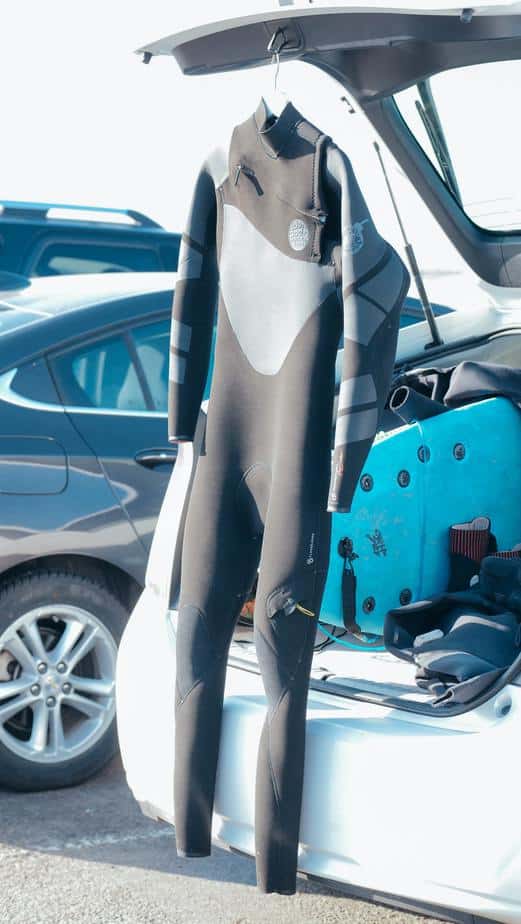
Let’s be honest: everyone pees in the ocean. If you happen to be wearing a wetsuit at the time, do you really think that’s going to stop you from peeing? Probably not. When you gotta go, you gotta go!
Thankfully, peeing in your wetsuit is relatively harmless. What’ll happen is that the water inside your wetsuit will get a little warmer. Then, it will slowly flow out of your wetsuit and get replaced by new water. You’re not going to be literally confined with your own urine the whole time.
With that said, whether you’ve peed in your wetsuit or not, you had better be rinsing it with fresh water after each surfing session. And if you did pee in your wetsuit, better use some wetsuit shampoo as well to ensure cleanliness. Few things are more unhygienic and gag-inducing than when the wetsuit you’re about to put on smells like a urinal.
There’s a lot more that goes into wetsuit maintenance than just cleaning. You also have to know how to hang it up properly to dry, how to pack it for travel or store it for the off-season, how to mend a ripped wetsuit, and so on.
Chances are, if you’ve spent hundreds of dollars on a nice wetsuit, you’ll want to put in some effort in taking good care of it. However, for some people, this might be more than they bargained for. Having to constantly clean, hang, store and pack their wetsuit might become a nuisance.
If you do not want to deal with the hassle of maintaining your wetsuit, your options are either to rent one each time or wear a rashie with surf leggings if the weather permits.
Less expensive

Buying a rash vest and a pair of surf leggings is significantly cheaper than buying a wetsuit – as much as ten times cheaper. If you have a limited budget and only surf in the summer, then don’t feel forced to buy a wetsuit.
How come wetsuits are so expensive? First off, there is a wide range of wetsuits available on the market. Wetsuits come in many thicknesses, styles, designs, sizes, and with slightly different features depending on which sport it’s designed for (e.g. zipper placement, extra padding in certain locations).
On top of that there are many surfing brands. With wetsuits being such crucial products for any water sport, unsurprisingly the market for them is vast, and so too is their pricing. Yes, you can get a cheap wetsuit for $100 USD or less. However, if you want one that keeps you warm, comfortable, protected, and is flexible, then you will have to pay for that quality.
The cost is not much lower if you decide to rent. If you have to rent a wetsuit say 10 or so times a year, then the money you spent renting will eventually add up to the price of a wetsuit. This statement will eventually become a fact the more times you rent.
Depending on how often you surf and how much you enjoy this activity, you can potentially justify spending several hundreds of dollars for a high quality wetsuit. You can think of it as an investment that will eventually save you money over renting over the long run.
However, as we mentioned, a wetsuit has its pros and cons. It’s not strictly necessary to wear a wetsuit for surfing. Depending on your situation and needs, you may feel that a wetsuit is not worth the cost for you, and you’d rather just wear a rash vest and surf leggings.
No surf or wetsuit rash
One of the advantages of wearing a wetsuit is that it can act as an extra layer of skin that protects your actual skin. While a wetsuit may solve the issue of surf rash from your chest and stomach rubbing against the board, ironically wetsuits can cause rashes of their own.
In some very rare instances, a wearer might be allergic to the neoprene and get skin rashes that way. More commonly, surfers who have not rubbed Vaseline on their skin will have their skin get rubbed raw by the wetsuit instead of the surfboard.
Common areas where wetsuit rashes flare up are under the armpits and behind the neck. If you’re wearing board shorts, it’s very common for your inner thighs to develop rashes as well.
For these reasons, it may be worth it to wear a rash vest and surf leggings. A rash vest can also protect your chest and stomach from surf rash. However, since rashies don’t have to fit as tight, the material will not be in such close proximity that it can rub your armpits or your neck.
As for an alternative to board shorts, we recommend surf leggings (or even just a regular pair of leggings or yoga pants) or compression shorts.
By wearing these alternatives, you can prevent both surf rash and wetsuit rash – but you will not be kept as warm, so you can only wear them in the summer.
Summary
To summarize, while wetsuits provide many advantages to surfers, they also have some downsides which can make them less essential than you might think. Therefore, you do not have to wear a wetsuit while surfing, though common wisdom is that you should still do.
Some of the downsides of a wetsuit are: restricted mobility, overheating, wetsuit rash, cost, and maintenance. Furthermore, some of its benefits like UV and surf rash protection can be provided by a rash vest and surf leggings.
Infrequent surfers may not be able to justify the cost of buying a wetsuit, so renting remains an option. With that said, even renting has its risks – if you damage the wetsuit, you have to pay for it. Some people would rather not even take that risk.
Instead, if the water temperature is warm enough, you can just wear a rash vest with surf leggings as an alternative to wearing a wetsuit. In this situation, you do not need to worry so much about getting cold, and you are still protected from the UV rays and surf rashes. Thus, you do not strictly need to wear a wetsuit all the time for surfing if you don’t want to.



